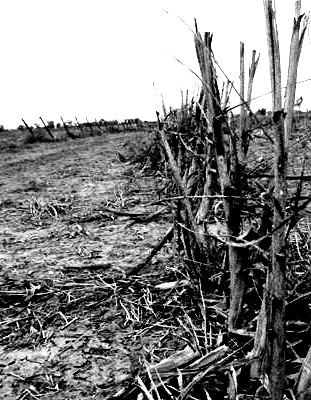Big water take questioned
 Fortune Agribusiness has applied to use 40,000 megalitres of water a year for a major fruit and vegetable project.
Fortune Agribusiness has applied to use 40,000 megalitres of water a year for a major fruit and vegetable project.
The company wants to develop a giant fruit and vegetable farm at Singleton Station, about 100 kilometres south of Tennant Creek in Central Australia.
The Central Land Council - representing traditional owners in Central Australia - says it has some major concerns about what would be the Northern Territory's largest private water allocation.
CLC executive director of policy, Josie Douglas, is calling on the NT Water Controller to reject the licence application, saying there are too many unknowns about the potential environmental impacts.
“At the end of 2020 the Central Land Council met with native title holders and residents, and people were very concerned,” Dr Douglas said.
“It is the very strong view of the Central Land Council that a project of this size, where a public resource is being provided for free, must meet the most rigorous scientific standards, and a precautionary process must apply at every step of the way,” she told the ABC.
Charles Darwin University hydrogeologist Dylan Irvine agrees that there has not been enough scientific research to prove the project would be safe.
“We’re talking [about] an application to extract half the volume of Sydney Harbour,” Dr Irvine said.
“There's modelling from Fortune Agribusiness that's modelled potential drawdown from their operations.
“The issue with that model is it's based on scant data, and we don't know what the impact on salinity is going to be in the shallow aquifer region.
“Once approved, this water's going to be made available for free, but if this water was being extracted from the Murray Darling Basin, we'd be talking in the order of $20 million a year for that water use.
Fortune Agribusiness chairman Peter Wood says the company has undertaken rigorous scientific research.
“The process to come up with the water allocation plan took a number of years,” he said.
“There was, for the first time, a significant groundwater model developed to help determine the amount of water that's stored in the aquifer there, and the amount of water that's available.”
The company claims to have had constructive meetings with traditional owners and native title holders.
“We've given verbally, and in writing, commitments that we want to work closely with the traditional owners to develop this project in a way that is beneficial to everybody, including them,” he said.
“The benefits to them can be substantial.”
Mr Wood says the allocation of 40,000 megalitres is less than the amount deemed safe to draw down.
“If we get a licence, it will have numerous conditions attached which require us to monitor extensively the behaviour of the aquifer and adapt our project to ensure that the impacts are not greater than is envisaged,” he said.








 Print
Print